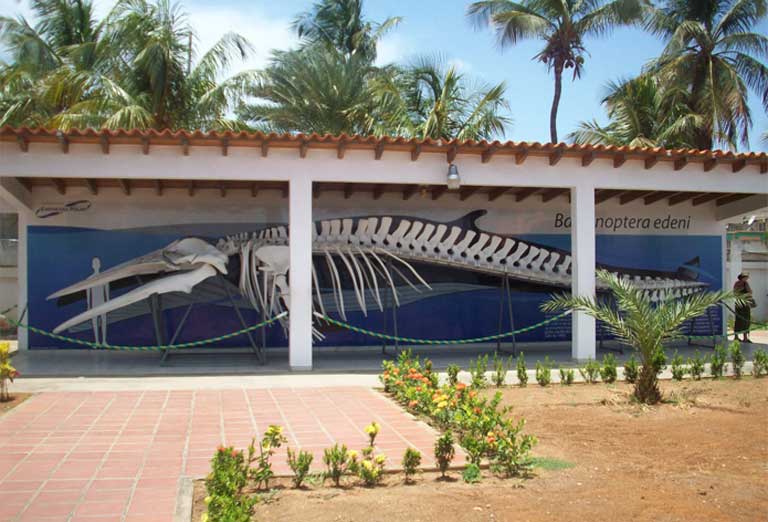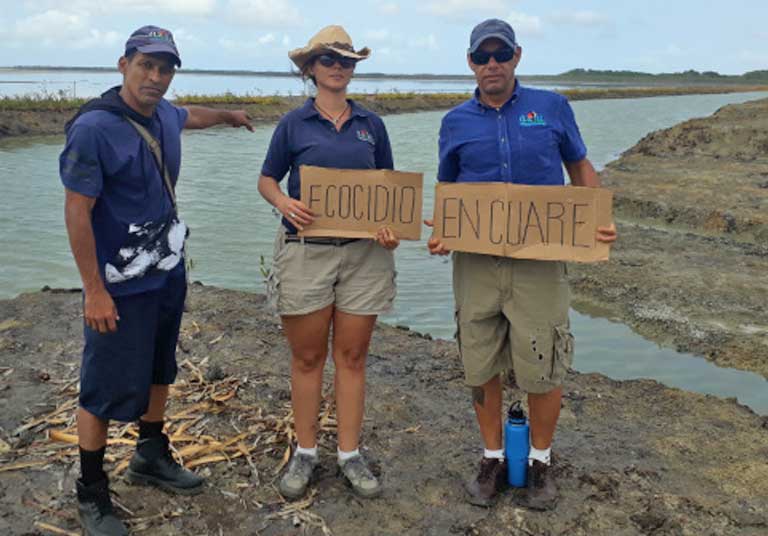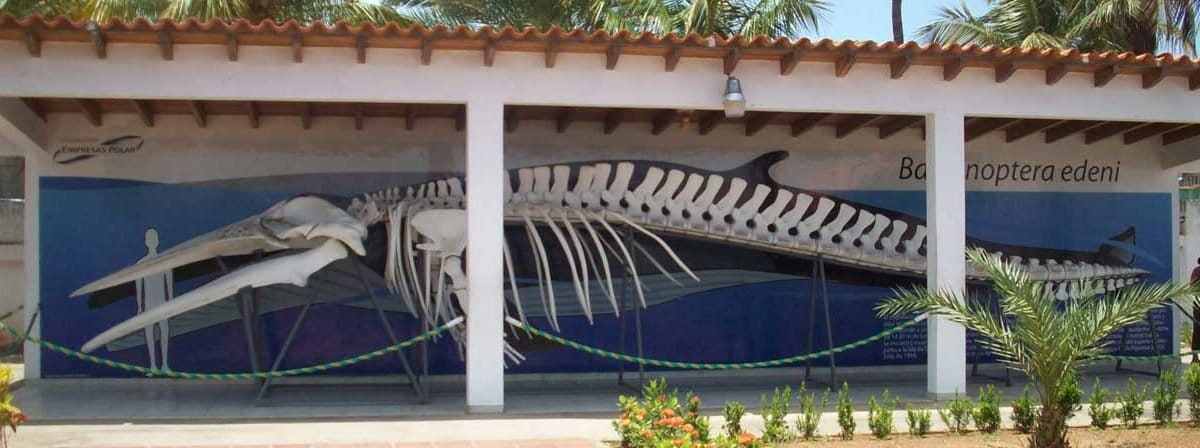- Many non-governmental organizations in Venezuela — which many analysts now call a failed state — have decided to reduce their operations to stay alive.
- As Venezuelan inflation rates soar, environmental NGOs are learning to skillfully juggle currency exchange rates that complicate their international funding.
- Alliances between NGOs, volunteerism, along with the efficient use of small donations from businesses, are all helping keep environmental organizations going, as they prioritize which of their programs should survive and which must be cut or passed on to other groups.
Swept up by an unprecedented whirlwind of political and economic uncertainty, a statewide failure of public services, and the “dollarization” of Venezuela’s economy, the nation’s environmental non-governmental organizations (NGOs) have employed various creative strategies in an attempt to continue their educational, conservation, and research programs — and to simply survive.
These efforts include reducing their operations and using shrinking resources more efficiently. The NGOs have also had to learn quickly about global economic mechanisms: learning lessons about depreciation, cryptocurrencies, and international banking transactions in order to comply with the country’s tightened exchange regulations. All these issues have been amplified by the ongoing COVID-19 pandemic.
With the announcement of Venezuela’s first two positive COVID-19 cases on March 13 came the declaration of a total quarantine for the country beginning on March 16. All domestic and international flights were suspended two days later. The country’s NGOs had to halt almost all of their in-person activities at once, while their online training and education activities were impacted by near-constant daily interruptions in Venezuela’s electricity and telecommunications services — the old-new normal in the failed Venezuelan state.
By September 2, 2020, Venezuela had seen 391 Coronavirus deaths and 47,756 positive cases, including 91 cases among a single Indigenous group — the Pemón community — near the border with Brazil, plus five Waraos in the Orinocos Delta, and 43 Wayuus in Zulia state, whose Indigenous territory straddles both Colombia and Venezuela. A widespread shortage of water, which is indispensable in the fight against the Coronavirus, has been aggravated by a year with very little precipitation
A report from the School of Hydrometeorology at the Central University of Venezuela revealed that during the first five months of 2020, Venezuela only received rain on nine days, and that rainfall totaled only 40.5 millimeters. The historical averages are 28.3 days and 190.8 millimeters of rain, respectively. According to the report, there is a 95.8% chance that the country will not reach its annual rainfall averages and that 2020 will be categorized as an “extremely dry” year. All of these factors have led to an increasingly complicated situation for Venezuelan environmental organizations.

The spirit of volunteerism
With a plummeting national minimum salary of just $3 per month — which, in the best-case scenario, could reach $20, but never more than $30 —, Bladimir Rodríguez, a biologist and public relations director at the Margarita Marine Museum, appeals not to economics but to people’s sense of belonging.
The Margarita Marine Museum has been directed by the Museo del Mar (“Sea Museum”) Foundation since 1994 and is a private initiative promoted by Fernando Cervigón, an ichthyologist who died in 2017. The museum, which has been declared part Venezuela’s Cultural Heritage, is located in a fishing town, Boca de Río on the Macanao Peninsula on Margarita Island. With a spectacular whale skeleton among its prime attractions, it exhibits the marine flora and fauna of the Venezuelan Caribbean. The museum features environmental education programs and is known for its biodiversity and scientific studies.
A drastic drop in tourism in recent years almost completely wiped out the museum’s income. It once averaged 85,000 visitors per year, but the museum was forced to carry out a technical closure in 2016 as the nation’s economy tanked. A donation campaign allowed it to open again, although the situation has not improved much since then.
In 2019, the Margarita Marine Museum received just 8,000 visitors; the majority were Colombian tourists brought in thanks to an alliance with the Chamber of Tourism of the island state of Nueva Esparta. Belt tightening measures intensified, says Rodríguez. The museum’s staff “was reduced from 30 to 11 people. We have no new exhibits, and we have had to suspend the construction of one of the galleries and the new administrative area.”

Rodríguez credits employees’ dedication and sense of belonging for the museum’s continued operation, its quality, cleanliness and good management which continues to impress visitors. “Even though [the employees] are not receiving a fair wage because the institution does not have resources, they understand the importance of having a museum here, which was created in honor of the support that traditional fishermen gave to Dr. Cervigón for half of a century.”
Collaborations with an airline and with a prominent food company have allowed the museum to operate and not permanently close, but the current situation is not sustainable, especially as COVID-19 reduces possibilities.
The employees’ heroism has continued through the pandemic lockdown: despite the museum being closed, staff still reported to take care of the museum collection. Rodríguez remains pessimistic about the organization’s financial future. Even before the pandemic, the organization had applied for a subsidy to overcome economic losses caused due to the absence of tourists. “If the lack of fuel continues, it will be very difficult for the few tourists who come to the island to come to where we are,” Rodríguez explains.

This spirit of volunteerism also inspires Enrique García in Maracay, who created an initiative called Sembramos Todos (“We All Plant”) to promote the protection of Henri Pittier National via reforestation activities an environmental reports.
Although the organization’s saw a drop in volunteers from 300 to 75 in the past year, it has received cryptocurrency contributions regularly since 2011 to help it keep up its activities. Alliances with a local radio station, a group of students learning English, and the Museum of the Agricultural Zoological Institute (MIZA) have been essential to the organization’s survival.
Although We All Plant lost two nurseries containing almost 1,000 trees due to the current water shortage, one of their achievements is the response the institution received to its complaints about invasive species and tree damage.
“The Mayor’s Office has already stopped blocking us on Twitter!” says García, about his criticism about the tree logging activities from the municipality, constantly denounced by the public through its organization social networks
Venezuelan NGOs have had a tense relationship with the country’s government since 2006, when it enacted legislation that led to greater controls and regulations for receiving funds. Over the years, NGOs have also been publicly criminalized for their work, and many have been accused of working for foreign interests. Like other activists, García not only experienced a three-month delay in his activities due to the quarantine, but also faces the challenge of reopening due to water and fuel shortages. Although these deprivations existed before the pandemic, García says, they could worsen even after the threat of the Coronavirus is gone.

Exchange rate troubles and dollar dominance
The Tierra Viva Foundation has been implementing programs linked to the Sustainable Development Goals of the United Nations since 1992. These goals include fair trade for handicrafts made by Indigenous women from the Warao, Wayuu, and Ye’kuana ethnic groups and an operation in Tucupita, Venezuela. Tucupita is the capital of Delta Amacuro state, a predominantly Indigenous region where the Orinoco River flows into the Caribbean Sea.
In the northern Venezuelan state of Carabobo, the NGO runs two other programs: a citizen network for collecting solid waste in the city of Valencia, and community production of organic cocoa using agroforestry methods, along with ecotourism, that protects the Canoabo River Basin.
Biologist and Tierra Viva General Manger Alejandro Luy told Mongabay about the obstacles to receiving financial contributions from local offices of transnational companies and from international cooperation agencies due to shifting exchange rates: “We have always used the State’s exchange control mechanisms and the official dollar value. This made it so that when there were big differences between the value of.”
In May 2019, there was an unexpected change: the government announced a new “floating exchange” economic mechanism. Since then, the mechanism has allowed private banks and exchange facilities to trade dollars , only in cash, up to $500 per person per day. This further complicated the situation for NGOs. Tierra Viva did not have cash, but it did have funds in foreign accounts, useful for the official exchange mechanisms; this led to months of uncertainty for the organization. They were repeatedly forced to turn to foreign suppliers to cover some necessities until they managed to find a Venezuelan bank that could carry out these operations locally.
Since July, the official and parallel rates have been almost the same, so at least this struggle has become less severe.
“Hyperinflation has forced us to become much more efficient, so that our activities are more concentrated: what we used to do in several weeks we now do in only one week in order to reduce expenses. We still face rent increases and a shortage of replacement parts for vehicles, which are now valued only in dollars,” not Bolivars, says Luy.
A recent study found that 64 percent of the purchases and sales in Venezuela are done using the dollar. In Maracaibo and San Cristóbal, two cities bordering Colombia, dollars are used in over 90% of these transactions.
“We have made an effort to preserve the salaries of our personnel, which is income that allows them to fully dedicate themselves to their work, including contracting insurance policies for foreign currency due to the risks that [the exchange rate] poses,” says Luy.
In previous years, Tierra Viva allowed its collaborators to excuse themselves from work to buy food at regulated prices and even delivered food directly to them to supplement their diet. Even today, the organization allows personnel to go home before five in the afternoon because it is nearly impossible to find public transportation during the normal rush hour.
“We have used the [Tierra Viva] Foundation’s vehicles to find water for the families of our personnel,” says Luy. The general shortage of water in Venezuela led Tierra Viva to create new activities related to COVID-19 in the communities in which it operates; this came after two months of compliance with quarantine restrictions. The NGO had to replace in-person training workshops, including trips to the field, with the distribution of educational materials, which required many hours of writing and planning.

A similar situation is playing out at PhyNatura, an NGO that develops agroforestry programs to preserve forests, and terrestrial and marine wildlife in the Caura River Basin in Bolívar state. PhyNatura establishes conservation agreements with Afro-Venezuelan, Indigenous, and Creole communities in order to preserve 148,000 hectares (about 365,715 acres) of forest, home to 724 bird species and 1,179 tree species.
A partial secret to success in adversity: “We have convinced the international mutual aid workers to use our accounts abroad,” says PhyNatura Director Luis Jiménez. PhyNatura was forced to change the frequency with which it exchanges dollars for Bolívars. The NGO went from doing so every two months to exchanging currency on a weekly basis to capitalize on the best possible rates on the wildly fluctuating exchange market. They also dollarized price and cost structures for the sale of Indigenous handicrafts.
The arrival of COVID-19 — together with an intense fuel shortage lasting into June and then reappearing stronger in August— almost paralyzed PhyNatura. The crisis also affected their alliances. Some communities continue to fulfill their conservation agreements, but the food shortage necessarily led to an increase in subsistence agriculture. This led to the deforestation of some already conserved areas.

The emigration of some of PhyNatura’s specialists to other countries also brought difficulties. “It cost us — psychologically and economically — to replace them, which especially affected the formulation of new proposals or the improvement of those that we already have. Those who stayed have assumed double duties, depending on their abilities. In exceptional cases, they continue to collaborate or work remotely, without going to the field,” says Jiménez.
PhyNatura’s diminished operational capacity meant fewer forest rangers and specialists from the National Park Institute and Ministry of Ecosocialism in the field. To compensate, PhyNatura pushed for alternative governance by local communities and colleagues abroad to serve as a buffer against the gangs that dominate illegal gold mining in and around protected areas.
“In order to develop abilities in the communities, we have had to redirect resources to hire private consultants with very busy schedules, and this also prolongs implementation times,” says Jiménez.

Forming alliances; surviving against all odds
Hard pressed Venezuelan NGOs contacted by Mongabay Latam said that sharing resources, personnel, and goals among fellow non-profits has improved their survival ability in the midst of the humanitarian emergency.
Biologist and environmental educator Alejandro Álvarez Iragorry, who coordinates Clima 21: Ambiente y Derechos Humanos (“Climate 21: Environment and Human Rights”), also credited his organization’s stubbornness and sheer power of will: “We are here because we want to be, because we feel like it, and because it is our right and our moral obligation. So a lot of what we do [today] is done through volunteerism,” says Álvarez Iragorry.
Together with Tierra Viva and Todos Por El Futuro, Clima 21 created the basis for the documentation, communication, and articulation of civil society efforts surrounding environmental rights in Venezuela. These include two important reports about water access and Orinoco Mining Arc impacts. Despite this achievement, they still had to suspend two major programs, including youth participation projects in four cities.
Gustavo Carrasquel Parra, the director of an NGO called Azul Ambientalistas (“Blue Environmentalists”) in Zulia state, also had to severely curtail its programs. EcoEscuela (“EcoSchool”), EcoEmpresa (“EcoCompany”), and Bosques Urbanos Comunitarios (“Urban Community Forests”) — programs that promote recycling and urban tree planting — all had to be reduced by half.
“We had sustainability programs with companies that allowed us to generate our own resources, but since 2018, we have only had a handful [of companies] that give us very small contributions,” says Carrasquel Parra, thus the reductions.

Azul Ambientalistas, after losing emigrating biologists, agronomists, and engineers also decided to reduce costs. They stopped distributing food and water on plastic collection Saturdays at two shopping centers on the shores of Lake Maracaibo. Today, those efforts are instead supported by a collaboration of local restaurants.
Despite all these obstacles, the work of Azul Ambientalistas is still valued. That’s why its director, Carrasquel Parra, traveled to the Cuare Wildlife Refuge in Falcón state, invited there by local tour operators. They asked for his expert views about an illegally-built navigation channel which threatens to completely alter the hydrological and ecological dynamics of the region.
Parra has sympathy for all parties involved: “Companies are in survival mode [in Venezuela as well]; we cannot put too much pressure on them, either. The companies, together with the NGOs, make up the basis of a society in resistance,” says Parra. Because it could not complete activities during the COVID-19 quarantine, Azul Ambientalistas took advantage of the time to plan an ecotourism trail that can build when in-person activities begin again. This project will allow the organization to establish new alliances with universities, companies, and other NGOs.
So it is that NGOs in Venezuela continue to press ahead simply because they must.
This article first appeared here at Mongabay-Latam on June 24, 2020.
FEEDBACK: Use this form to send a message to the author of this post. If you want to post a public comment, you can do that at the bottom of the page.
